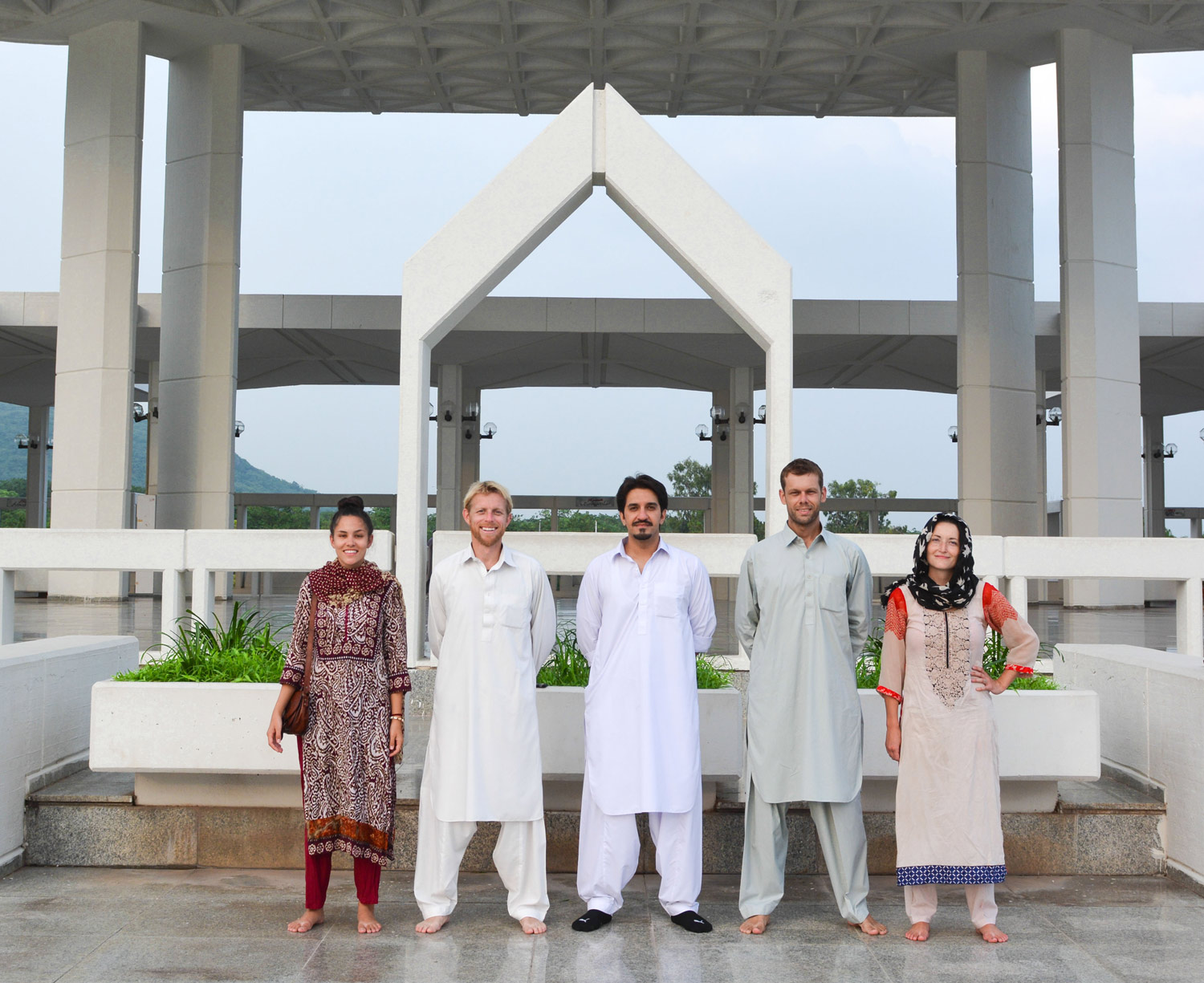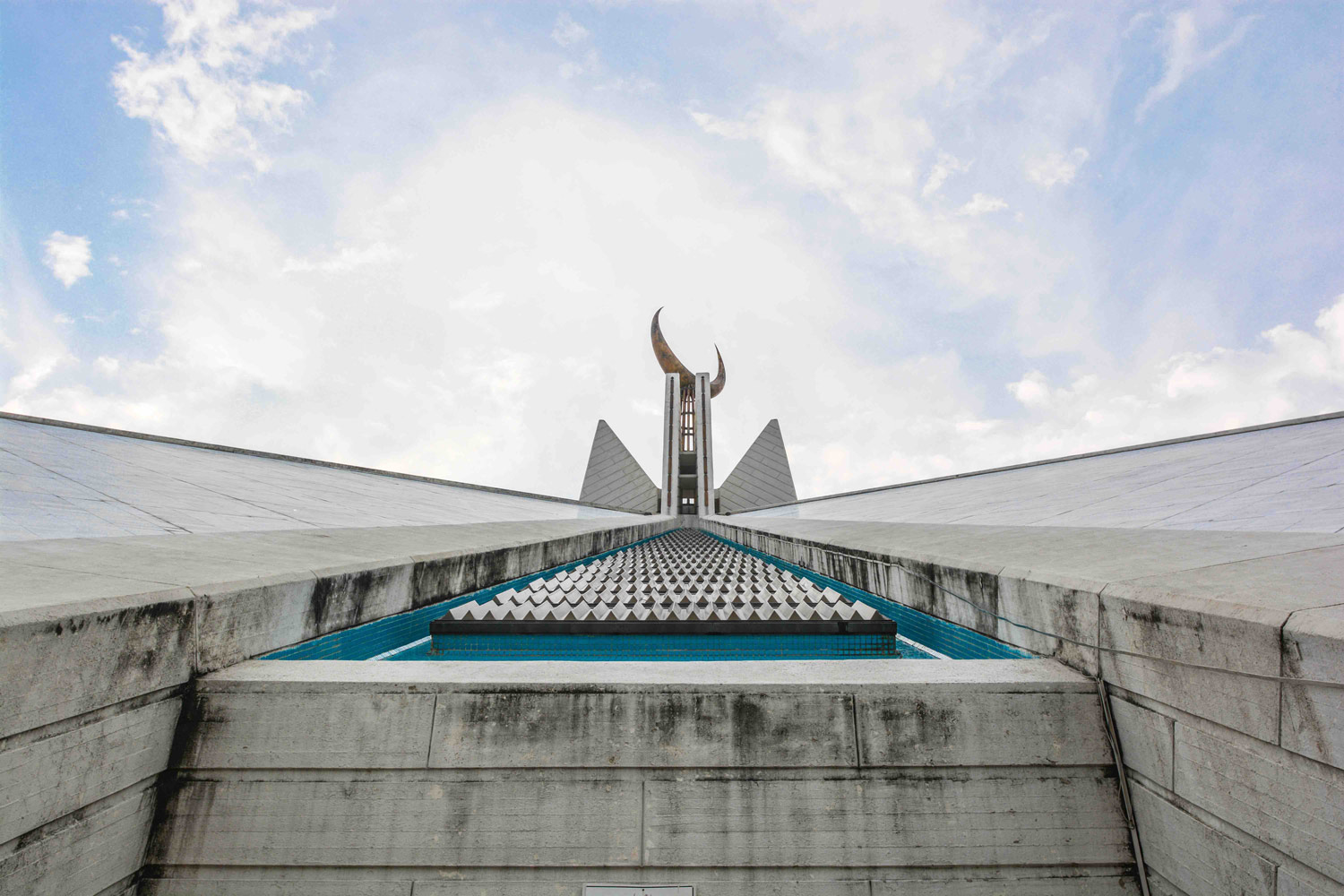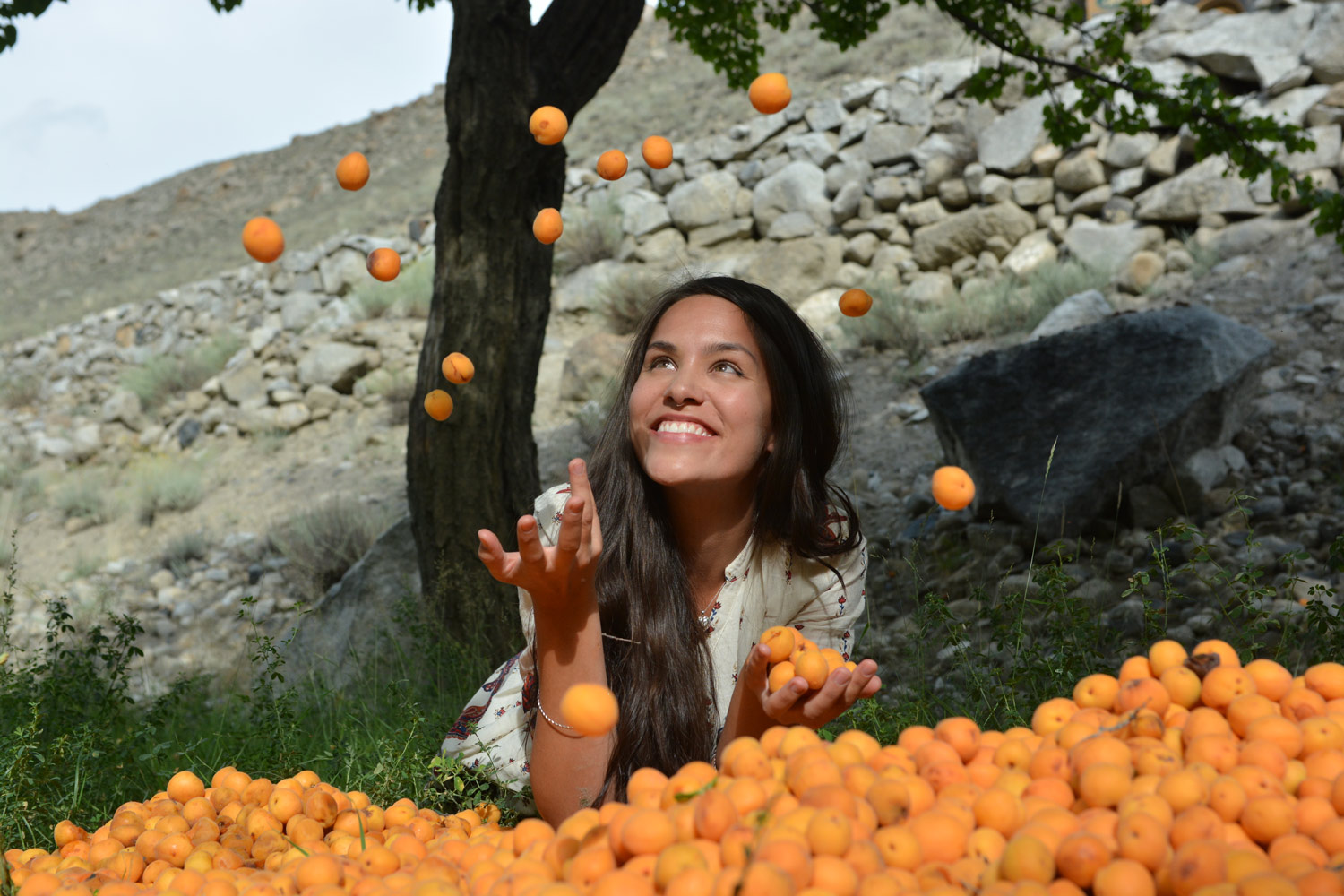Pakistan offers enough experiences to entertain short-term tourists, this complex country isn’t a holiday destination, it’s a unique classroom offering a sharp, character-building education for adventurous nomads. A trip to Pakistan will not only change your perspective on Pakistani and Muslim culture, it’ll also challenge how you view the rest of the world – especially countries which cop a lot of flak in the media.
Before arriving in Pakistan, I assumed the ways of Western women were considered sacrilege and the locals would greet me with stern disapproval. I also expected Pakistani women to be an invisible, silent community walking amongst a land of men. After all, that’s the imagery foreigners generally see on television and in the newspapers. I arrived at the Wagah border post, I had a feeling my perceptions were going to be challenged. Within five minutes, one of the male officers kindly offered me tea and started to ask me about life in Australia. To this friendly gentleman, I wasn’t a woman waiting in the shadows while the men talked shop; I was an intriguing human being, a guest to be greeted with absolute kindness. Male or female, it didn’t matter.
For my first night in a Lahore, the Motorcyclist’s Association of Pakistan had arranged a “welcome party” for my fellow overland travellers and me. There were only two ladies in the group, a lovely French girl named Gigi and myself. We purposefully positioned our chairs at the rim of the gathering, so we didn’t disturb the jovial crowd of men while they discussed motor mechanics and overland adventures. We feared any attempts to join in the conversation would be ignored or cause offence, so we talked amongst ourselves. But, before long, we were pulled into the fold, offered a feast of fresh mangoes and wrapped up in excitable conversation. It felt like we were chilling out with a group of mates back home rather than a pack of male bikies in Pakistan!
There was a moment when I thought I’d finally crossed the line and unintentionally disrespected the local culture, but it was in the presence of an elderly village woman. I’d put on a dress which fell above the knee for a film project and made my way to a suspension bridge in Passu, attempting to avoid locals along the way. I wanted to duck in, duck out and get changed before anyone noticed me. But, unfortunately, what started out as a quiet film shoot quickly turned into peak hour for commuters along the bridge. When Lady Senior came across my legs she pointed at them and started to talk rapidly in her native tongue. When I apologised in English, I think she could sense I was genuinely sorry, as her confused expression quickly turned into a cheeky grin. The elderly woman grabbed me by the hand and guided me onto the rickety bridge for a photo – she knew she was the star attraction.
While the women in remote villages were more conservative in their fashion preferences, their urban counterparts seemed a bit more liberal. During my time in Lahore, I was delighted to see Pakistani women wearing an eclectic array of garment styles, from jeans and long-sleeved tops to glittering tunics with colourful matching pants (known as shalwar kameez). I discovered not all Pakistani women were confined to a burka and the walls of their own home. While this lifestyle undoubtedly exists in areas of Pakistan, I got the feeling it’s often driven by personal choice or a desire to carry on tradition. Many of the women I encountered wore modest “Western-wear” and enjoyed high power, corporate roles outside of the home – lawyers, journalists, employees of the UN and beyond. One local explained to me that Pakistan nurtures one of the highest ratios of women in political positions. I wish my home country could say the same thing.
Throughout the rest of my time in this intriguing country, most of the locals greeted me with the same open curiosity and warmth that I showed them. When I plucked up the courage to have a voice, they gave me the same attention and respect as my husband. On one occasion, I went to shake a Pakistani man’s hand after my spouse and the gesture wasn’t returned. However, the gentleman smiled kindly at me an explained it was against his religious beliefs to do so. It had nothing to do with seeing women as inferior; it was an act of respect towards my husband and me. This moment, along with many others, made me realise it’s ok for female foreigners to make little mistakes and exercise freedoms within reason while visiting Pakistan, and that the locals are generally forgiving, open-minded and happy to explain the nuances of their culture





Before entering Pakistan, I expected the locals to react to tourists (especially from Western countries) with an air of disapproving detachment – even outright hostility. Not once did I encounter any hatred towards our group of foreign travellers (we even had an American in tow). According to Muslim culture, it’s an honour to host guests and we were certainly treated like royalty during our stay. Beaming smiles, courteous waves, and hearty man-hugs (for the boys) followed us wherever we went. More than any other international community I’ve engaged with, Pakistanis expressed a deep desire to show tourists a great time and prove their country is so much more than the negative headlines, which attain extensive coverage through international media. Unfortunately, it seems the horrific actions of a minority have unfairly tarnished the reputation of the whole community, which, in my experience, is welcoming and tremendously hospitable towards foreigners. The locals grabbed us by the hand and took us on the best guided tour we could’ve hoped for. We were supported with free accommodation, traditional feasts, sightseeing sessions, carwash and laundry services, administrative support, and new friendships throughout our stay. One family even leant us the clothes off their back, so we would blend in during a visit to the town mosque. Government staff were equally as supportive, working overtime and adapting processes to help us exit the country according to our schedule. We felt completely looked after by the community at every level. I was particularly delighted to discover Pakistanis enjoy discussing the different aspects of their country and vocalising their opinions – they weren’t nearly as guarded as I expected them to be. All of our contacts were happy to answer any questions we had about Pakistan and the local culture from the topical to the taboo. They really seemed to get it – that transparency was they key to improving our understanding, reducing our fears and inspiring us to share positive stories about Pakistan with the world.






Originally, Pakistan was merely our gateway to “The Stans” and Europe. Our plan was to get in and get out as quickly as possible. But the locals and Mother Nature had other ideas. Thanks to the insightful crew from the Motorcyclists’ Association of Pakistan, we soon discovered this multi-faceted country was home to a plethora of unique cultural experiences, intriguing towns, grand manmade structures and breath-taking landscapes – all begging to be explored. Due to flash flooding and road blockages along the Karakoram Highway, we had an extra week up our sleeve to enjoy them. Here are some of my favourite experiences in Northern Pakistan:
1. Badshahi Mosque:
Constructed by 1673, it’s the second largest mosque in South Asia and the fifth largest mosque in the world. It’s as mighty as is it magical, and I could understand why Badshahi is Lahore’s most famous landmark. The courtyard, which spreads over 276,000 square feet, can accommodate a whopping one hundred thousand worshippers!
2. Lahore Fort (Shahi Qila):
Located in Iqbal Park, one of the largest urban parks in Pakistan, this magnificent citadel is a UNESCO World Heritage Site. Origins of the fort extend far into antiquity, with the base structure being built during the reign of the Mughal Emperor between 1556 and 1605. Manifesting the rich traditions of Mighal architecture, this tourist hot spot is a delight to explore.
3. Nightlife in Islamabad:
Pakistan’s capital city really comes to life as darkness descends. We started our night on the town at Mt Daman-e-Koh, which offers dreamy views of the glittering, pancake-flat cityscape below. Our group continued our tour with quick stops at Islamabad’s many community precincts for delicious eats and treats. Fine-dining and fabulous traditional restaurants abound in this contemporary part of the world. Note: Pakistanis eat late, especially in Islamabad – dinner usually starts between 9-10pm! We concluded our night with a shopping session at the infamous Centaurus Mega Mall, Pakistan’s largest mall. Housing over 250 retail stores and a funky eatery, it’s a great place to chow down on dessert while you window shop.
4. Faisal Mosque:
An iconic feature and international symbol of Islamabad, this mighty structure is the largest mosque in Pakistan. Once the largest of its kind in the world, it’s now the fourth largest mosque on planet earth. Attracting hordes of locals and tourists alike, it’s the perfect place for people-watching and offers foreigners a chance to soak up a bit of modern Islamic culture. Completed in 1986, it’s quite contemporary in appearance and shaped like a desert Bedouin’s tent. Located on a pedestal of land against a picturesque backdrop of the Margalla Hills, its prime position represents the mosque’s great importance and allows it to be seen from miles around – day and night.
5. Local foods:
If I’d stayed in Pakistan any longer, I would’ve eaten myself to death. My favourite traditional foods were made by our Islamabad host’s humble yet highly gifted chef, Jamroze. From flaky parathas and fresh samosas, to traditional breakfasts and flavour-packed curries, he kept dishing out the goods and we kept devouring them. There’s nothing better than a home-cooked meal. Then again, the local sweets were pretty delectable too. I was introduced to Shahi Tukra, Suji Halwa and a sticky brown cake thing which tasted like a super gooey Anzac cookie. I couldn’t believe these tasty morsels hadn’t come into my life sooner! Of course, no trip to Pakistan is complete without a taste of the local beverage – lassi. Fondly called White Beer by the teetotal Muslim folk, it’s refreshing and delicious.
6. The Karakoram Highway (KKH):
I’ve saved the best for last. Renowned as the highest paved road in the world (reaching 4693m), the journey to and along the Karakoram Highway is much more than a chance to witness a high-altitude record. Home to colossal glaciers, dramatic Himalayan scenery (including the nexus point of the world’s three highest mountain ranges), quaint villages, historical sites (e.g. The old Silk Road), iridescent lakes, thigh-burning hikes, and lush hills loaded with fresh fruit and organic honey, it’s a must-visit for anyone travelling to Pakistan.











Ultimately, while Pakistan offers enough experiences to entertain short-term tourists, this complex country isn’t a holiday destination, it’s a unique classroom offering a sharp, character-building education for adventurous nomads. A trip to Pakistan will not only change your perspective on Pakistani and Muslim culture, it’ll also challenge how you view the rest of the world – especially countries which cop a lot of flak in the media.
Thanks to my time in Pakistan, I’ve become more discerning with the travel stories and news articles I consume. I’m less quick to judge and more comprehensive with my sources of information. I’ve discovered the immense value of community hosts as grassroots ambassadors for a country, and realised I need to be actively helpful and welcoming towards of foreigners back home in Australia. My belief that the world is mostly full of kind, compassionate and good people has been reinforced. As I took my final step on Pakistani soil and ventured into the next foreign land, I carried a reinvigorated sense of hope and optimism with me. It’s the best souvenir I could’ve asked for. Thank you Pakistan.
All photos & Content: MEET BEN & SOPHEE SOUTHALL
This post originally appeared here.
Find out more and check the PART-1 of "Unveiling Pakistan by Meet Ben & Sophee Southall"
© DestinationPak 2015 Privacy Policy | Terms of Service